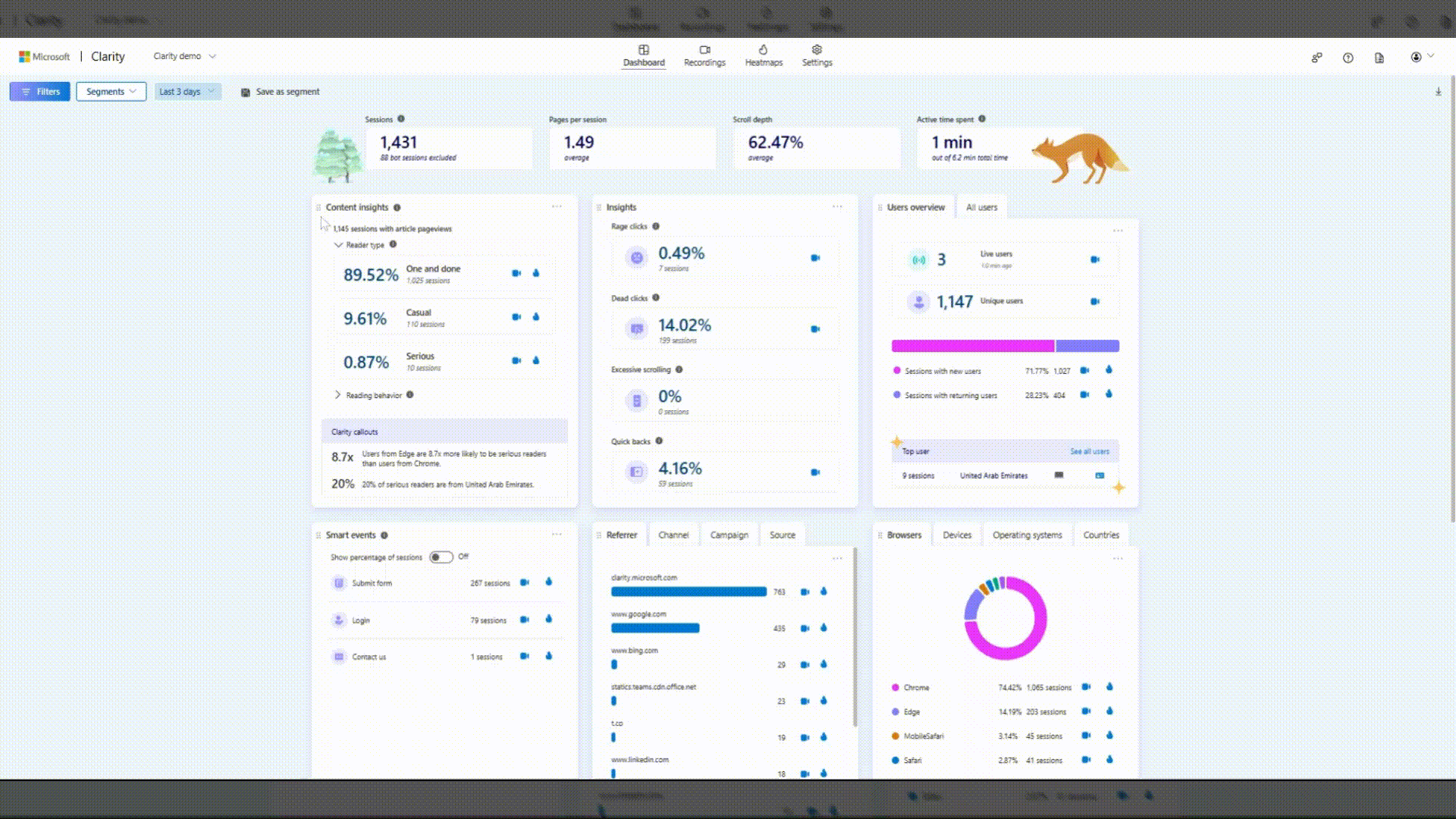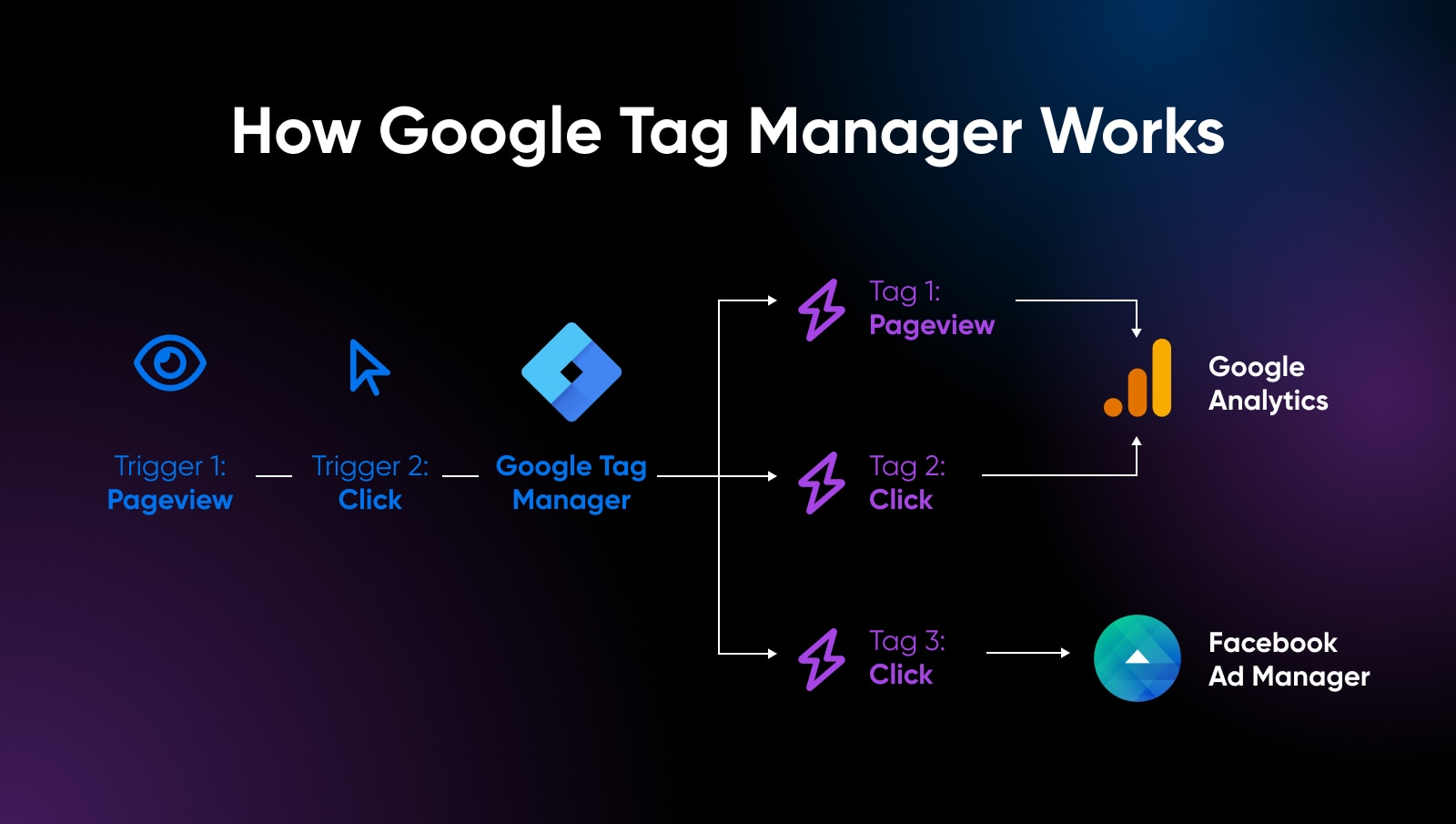Hotjar
Hotjar is a comprehensive tool that visualizes user behavior through heatmaps, session recordings, and conversion funnels. It offers detailed insights into user interactions, highlighting where they click, scroll, and move on your page. Hotjar also includes tools for gathering user feedback, such as surveys and polls, which can provide additional context to user behavior data.
Key Features:
- Heatmaps: Visual representations of user activity, showing where users click, move, and scroll on your page.
- Session Recordings: Playbacks of user sessions to understand their journey and identify usability issues.
- Conversion Funnels: Identify drop-off points in the user journey and understand where users abandon the process.
- User Feedback: Collect direct feedback through surveys, polls, and feedback widgets to gain qualitative insights.
Hotjar is designed with usability in mind, featuring a user-friendly interface that makes complex data approachable for everyone. With visual heatmaps and intuitive dashboards, you can easily interpret data without needing a data analysis background. This makes Hotjar accessible to smaller teams or individual marketers, even those without technical experience. Additionally, Hotjar offers extensive integration capabilities with many popular digital marketing platforms.

Source: https://www.brainsight.app/blog/hotjar-vs-brainsight
Clarity by Microsoft
Clarity is a powerful, free analytics tool by Microsoft that provides deep insights into user behavior on your pages. It excels in visualizing user interactions and identifying usability issues. Clarity's unique selling point is its session recordings and heatmaps, which offer detailed visualizations of user behavior.
Key Features:
- Session Recordings: Detailed user session recordings that allow you to see exactly how users interact with your pages.
- Heatmaps: Click and scroll heatmaps that visually represent user activity on your pages.
- Insight Dashboard: A comprehensive dashboard that overviews user behavior and key metrics.
- Machine Learning Insights: Automated insights highlighting key user behavior trends and anomalies.
Clarity is incredibly user-friendly, with a simple setup process and clear, actionable insights. It integrates with various platforms, including Google Analytics, allowing you to consolidate your data analysis efforts. Its detailed visual insights make it an excellent choice for identifying and addressing usability issues, thereby improving user experience and engagement.

Source: https://learn.microsoft.com/pl-pl/clarity/insights/dashboard-features
Google Tag Manager
Google Tag Manager (GTM) is a tag management system that allows you to easily update and manage tags (small code snippets) on your website or mobile app from a web-based user interface. This enables marketers to deploy and manage tracking codes without modifying the website's codebase directly.
Key Features:
- Tag Management: Simplifies the process of adding and updating tags without the need for code changes.
- Triggers and Variables: Allows precise control over when and where tags are fired.
- Built-In Tag Templates: Offers a wide range of built-in tag templates for various marketing and analytics tools.
- Integration: Seamless integration with Google Analytics, AdWords, and other third-party platforms.
Google Tag Manager reduces the dependency on developers for tag updates, making it easier for marketing teams to implement and manage tracking codes. This allows for more agile marketing operations, quicker tracking, and analytics setup implementation. Its robust integration capabilities ensure that GTM can fit into your existing marketing stack, enhancing your ability to track and analyze user behavior across your digital properties.

Source: https://www.dreamhost.com/blog/google-tag-manager/
Google Search Console
Google Search Console (GSC) is a free tool that helps you monitor, maintain, and troubleshoot your site's presence in Google Search results. It provides valuable insights into how your site is performing in search results and helps identify issues that may affect your site's visibility.
Key Features:
- Performance Reports: Track clicks, impressions, and average position in search results to understand how your pages perform.
- Index Coverage: Ensure Google can index your site properly and identify any issues that may prevent indexing.
- Enhancements Reports: Improve your site's user experience and performance by addressing issues highlighted in the enhancements reports.
- URL Inspection: Get detailed crawl, index, and serving information about your pages to troubleshoot and resolve issues.
Google Search Console is an invaluable tool for understanding and improving your site's search performance. It provides detailed insights into how Google crawls and indexes your site, helping you identify and fix issues that could affect your search visibility. The integration with Google Analytics allows for a deeper understanding of how search performance impacts overall site traffic and user behavior.

Source: https://developers.google.com/search/blog/2021/02/search-console-performance-discover-chrome?hl=pl
A/B Testing Tools
A/B testing is crucial for optimizing page elements to maximize conversion rates. It involves creating two or more versions of a webpage (Version A and Version B) and then testing these versions to see which performs better. This method allows marketers to make data-driven decisions by directly comparing different design, content, or functionality variations.
Why A/B Testing is Important
A/B testing helps you understand what resonates with your audience and what drives conversions. By systematically testing elements such as headlines, images, call-to-action buttons, and layouts, you can identify the most effective components of your pages. This leads to informed decisions that enhance user experience, increase engagement, and boost conversion rates. A/B testing also helps in minimizing risks by allowing you to test changes on a smaller scale before fully implementing them.
Here are some top A/B testing tools:
Optimizely
Optimizely is a leading experimentation platform for A/B testing, allowing you to test different versions of your pages and determine which performs best. It is known for its robust features and ease of use.
Key Features:
- Visual Editor: Allows for easy setup of experiments without the need for coding knowledge.
- Multivariate Testing: Test multiple variables simultaneously to understand their combined effects.
- Personalization: Tailor user experiences based on specific audience segments.
- Analytics: Provides comprehensive reporting and analytics to help you understand the results of your tests.
Optimizely helps marketers optimize their digital experiences through rigorous testing and data analysis. Its visual editor makes it easy to set up tests, even for those without technical expertise. The platform's advanced features, such as multivariate testing and personalization, enable more sophisticated experimentation and targeting. Optimizely's robust analytics capabilities provide detailed insights into test performance, helping you make informed decisions to improve your page conversion rates.
VWO (Visual Website Optimizer)
VWO is another popular tool for A/B testing and conversion rate optimization. It offers a comprehensive suite of features designed to help you understand user behavior and optimize your pages.
Key Features:
- A/B Testing: Easy setup and execution of tests to compare different page versions.
- Heatmaps and Session Recordings: Provide visual insights into user behavior and interactions with your pages.
- Personalization: Customize user experiences based on behavior, demographics, and other criteria.
- Analytics: Detailed reports and insights to help you understand test results and user behavior.
VWO is known for its user-friendly interface and comprehensive features catering to novice and advanced users. Its combination of A/B testing, heatmaps, and session recordings provides a holistic view of user interactions, enabling you to make data-driven decisions. VWO's personalization capabilities allow you to create tailored experiences for different audience segments, increasing the likelihood of conversion. The platform's detailed analytics ensure you have the insights needed to continually optimize your pages for better performance.
Conclusion
Leveraging page tracking tools is vital to any successful digital marketing strategy. Tools like Hotjar, Clarity, Google Tag Manager, and Google Search Console offer comprehensive insights into user behavior, enabling marketers to make data-driven decisions that enhance user experience and boost conversion rates. Hotjar excels with its visual heatmaps and session recordings, while Clarity offers free, detailed analytics with seamless integration capabilities. Google Tag Manager simplifies the process of managing tracking codes, and Google Search Console provides critical insights into your site's search performances.
Furthermore, A/B testing tools like Optimizely and VWO allow continuous optimization by comparing different page elements to determine what resonates best with your audience. These tools help improve engagement and conversion rates and reduce risks by validating changes before full-scale implementation.
By integrating these tools into your marketing toolkit, you can achieve a holistic understanding of user interactions, identify and address usability issues, and continuously refine your digital presence for maximum impact.

